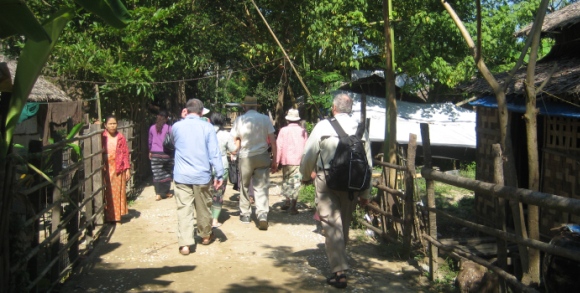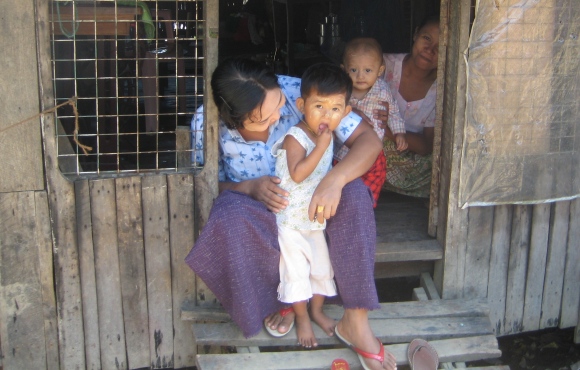
While with World Vision we visited Koun Thee Chaung village. They have constructed a non formal education school here also. We visited the school and the separate small library building. This had more books than the previous school. 147 of them were from us.



The jungle was not quite so dense here as before. Cyclone Nargis hit this area harder than the previous place and ripped most of it out. This village had 1600 people before the cyclone. 600 of them died. We talked to various people whose families were devastated. It’s one thing to hear about it on the news and another to be there talking to them.

When I was ten I read a Life magazine article about a famine somewhere, I think in Africa. Life magazine relied on pictures to tell the story. Among them were pictures of mothers holding babies that had died, one of starvation while waiting in line at a feeding center. It was so overwhelming I came to the conclusion that those people just had to be different from us. If that sort of thing happened to the people I knew and was around we simply couldn’t take it. We would fall apart, go crazy or something. No way could we ever recover. As far as I could tell from the article and pictures they did recover, at least enough to go on about their lives. So they must have been different from me.
Of course as I got older I learned that inside we really are the same and losses like this hit us all the same. At that point the physical distance kept up enough space that a disaster way over there did not so much affect me as I lived in the US. For me it’s only when I get over there where these things happened and get to know these people that the full impact of the loss hits. Then I get motivated to do something.
Not that we should not do something right at home where we live. But in the US there always will be a substantial response to disasters. We lost lives in the thousands in Katrina and the World Trade Center, but our response in each case was in the hundreds of billions. Katrina alone had 60 billion in insured losses – losses you know were paid for. The total laid out was much more than that. In Myanmar from what I can find the losses are estimated at around 1 billion, maybe as high as 4 billion at the outside. But how much money is actually applied to them? Again, from what I can find it is in the hundreds of millions of dollars.

Again, my figures are approximate, and I welcome correction. What I see is that the money layed out for Nargis was around a thousand times less than for a US disaster in which about fifty times fewer people died.
Some of us need to help out with disasters in the US, but there is plenty of room for those who want to help elsewhere.




A wonderfully lucid statement and photo history of your visit. I will cross reference this on the Nargis blog. Thanks, Jack